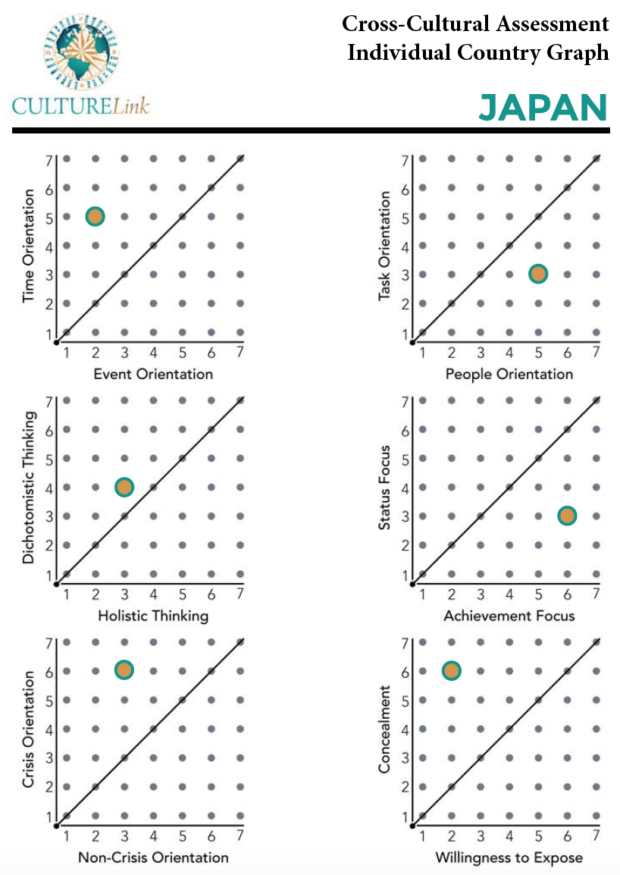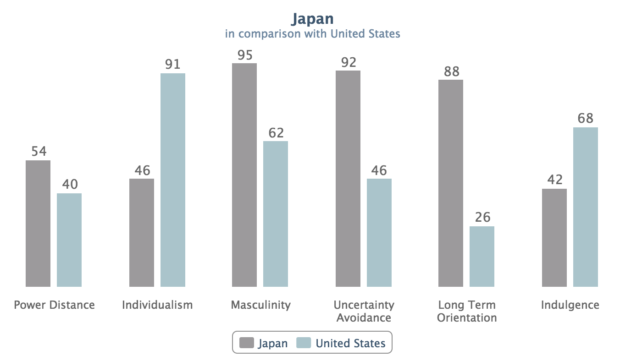There are six “opposing” priority systems that cultures tend to base their thinking and actions around.
The US is
- much more TIME than EVENT,
- midline DICHOTOMISTIC/HOLISTIC
- much more CRISIS than NONCRISIS,
- much more TASK than PEOPLE,
- much more ACHIEVEMENT than STATUS,
- more EXPOSE VUL. than CONCEAL VUL.
Japan and the US’s ways of thinking and responding align on three counts but diverge on three accounts as well.
Like the US, Japan is
- much more TIME than EVENT,
- much more CRISIS than NONCRISIS,
- much more ACHIEVEMENT than STATUS,
In contrast Japan is
- more DICHOTOMISTIC than HOLISTIC
- much more PEOPLE than TASK,
- more CONCEAL VUL. than EXPOSE VUL.
It is these three differences that I, and one, must be conscious of and careful with while working and serving in Japan in order to not offend and to have long-lasting positive impact.
Other cultural difference I, and one, will have to adapt to are:
Japan is a society that is
- Collectivist
- Masculine
- Uncertainty Avoiding
- Long-Term Oriented
- Non-self Indulging
- Respectful of Rank, Age and Role
In contrast the US is a society that is
- Individualistic
- Feminine
- Non-fearful of Uncertainty
- Short-Term Oriented
- Self-Indulging
- Non-rank, age, or role Focused
So in short, the culture I know and am accustomed to will be very different from the one I will be living and serving in. I must be aware of these differences and do my best to adapt to them in order to be culturally sensitive and adaptable.

